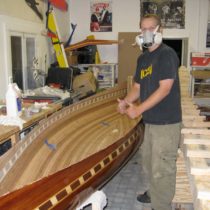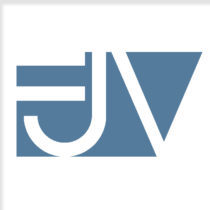Landscape Architecture for Landscape Architects › Forums › GENERAL DISCUSSION › Is it just me… or do we need to rethink our illustrative quality of figures in the landscape?
- This topic has 1 reply, 17 voices, and was last updated 14 years, 5 months ago by
 Ben Yahr.
Ben Yahr.
-
AuthorPosts
-
August 12, 2009 at 3:34 pm #173309
 Melanie Reber, RLAParticipant
Melanie Reber, RLAParticipantThis is not directed at anyone in particular… so please don’t take offense…
As a fellow designer with a background in Art and Art Education, I am perhaps more aware than many of the redundant use of ‘Leggitt Like’ drawn figures in LA plans. To me, at least, this completely dissolves any spark of what may actually be a truly innovative design.
Isn’t it time that we put the same creative energy into our representations of figures as we do into the representations of landscape itself?
Feel free to disagree, or to link to some innovative examples that we all may learn from.
August 12, 2009 at 4:16 pm #173354 Ben YahrParticipant
Ben YahrParticipantI’ve always wondered why there is such a standardized look to LA graphics, from the text to the Leggitt marker style. Not to say that the style isn’t effective. But especially in school, divergence from this style was highly discouraged or even penalized.
These days it is easier than ever to vary the visual style of a computer graphic, yet nearly everyone’s Sketchup drawing looks the same.
This site has some cool renderings. The last one the page being somewhat unique.
http://solosplace.com/archmasters.aspxBut overall, I would argue that we should be putting more creative energy into our designs and positively marketing the profession than our graphics…
August 12, 2009 at 4:46 pm #173353 Melanie Reber, RLAParticipant
Melanie Reber, RLAParticipant“I’ve always wondered why there is such a standardized look to LA graphics, from the text to the Leggitt marker style. Not to say that the style isn’t effective. But especially in school, divergence from this style was highly discouraged or even penalized.”
Agreed completely… Leggit is highly stylized, and it works… for Leggitt. But do we really want thousands of Leggitt clones? Is that the best we have to offer the consumer? Are we resorting to complying with mass production like TV dinners? Just grab one out the freezer when needed with no regard to taste or nutrition?
“This site has some cool renderings. The last one the page being somewhat unique.”Yes, lovely renderings… but where are the people who inhabit these places? It just feels like we are so enamored with the architecture that we fail to acknowledge why the architecture exists in the first place. I know I am guilty of this myself! When I photograph a finished work, I find myself cringing when a garbage can or bench gets in the way of that perfect arc. And darnnit, that client’s favorite blue pot just does NOT go with my design!
I too want to wipe the slate clean of people and things that were not in my original plans. 🙂 This is absurd thinking on my part, of course. Yet… this is exactly what we do when we have not designed for and with users in mind… and on paper.
“But overall, I would argue that we should be putting more creative energy into our designs and positively marketing the profession than our graphics…”
I suppose I would have to ask then… why does it need to be one choice over the other? Aren’t we inspired and talented enough to do both?
August 12, 2009 at 4:51 pm #173352 landplannerParticipant
landplannerParticipantI’m not sure how to respond to your point, because it is not exactly clear to me what that point is. First up, I am in the well-populated school of belief that hand graphics trump computer-generated ones, hands-down, anytime and anywhere. Computer and other graphics generated digitally certainly have their place and are powerful and persuasive means of visualization .
But in case you have not experienced it directly, people (read clients) respond far better and more favorably to hand-cranked graphics be they plan, axons, perspectives, sections …yada, yada…
What is incumbent upon us all is do develop our personal, recognizable, authentic and self-expressive graphic styles. If that means you squeeze off a few Legitt looking people along the way, who besides our own trained eyes, is going to know that, or even more importantly, care ?
That is my quarter.
August 12, 2009 at 5:35 pm #173351 Melanie Reber, RLAParticipant
Melanie Reber, RLAParticipant“I’m not sure how to respond to your point, because it is not exactly clear to me what that point is.”
Hmmm, then let me attempt to rephrase my original point.
Isn’t it time and isn’t it important enough to utilize our unique design skills across the board including our representations of figures (people) within our designs? Alright, granted that is the same wording somewhat, but I am just not sure how to reword the same question.“Computer and other graphics generated digitally certainly have their place and are powerful and persuasive means of visualization .”
Yes, every method of graphic representation has its place… be it hand drawn or digital or a combination of both. I am merely questioning why we would choose to replicate such a distinctive style, Leggitt only being one example… when we have so many other choices available to us?
“What is incumbent upon us all is do develop our personal, recognizable, authentic and self-expressive graphic styles. If that means you squeeze off a few Legitt looking people along the way, who besides our own trained eyes, is going to know that, or even more importantly, care ?”I almost thought you got the point with your first sentence… and beautifully so. But then that last part completely negates the first, in my opinion. I care. Informed clients care. Other visual designers care. Competitions care. Publications care. Employers care.
Why is it acceptable that we all don’t care?
August 12, 2009 at 9:01 pm #173350 Frank VarroParticipant
Frank VarroParticipantFirst, I must say that while OFTEN hand graphics are better received by clients, but that is not always the case. Often, the problem with computer drawn plans is that they look to cold, where the problem is really not that it is rendered by a computer, or in photoshop, but the methods used to make the drawings are not up to par. Also there is a difference based on who the client is.
Often clients who are not familiar with design firms (residential clients and public meetings for example), will prefer hand graphics because they feel computer graphics are to “slick” and must be hiding something. Most experienced clients (Park Boards, Planning commissions, Etc) realize that it is far easier to lie with hand graphics then with computer graphics.
You also cannot ignore the advantage that computer graphics bring of allowing animations and walk-throughs. In a culture that is more saturated with videogames people feel more comfortable in a 3D Computer version of reality, and in fact can now read a still of a computer model better then a hand drawn sketch, and its night and day if you can look at a slideshow of sketches or a computer model walk-through.
Back to the topic at hand, however, I think having a personal style really is key in a field like this. Whether it be the way you model and render, or the way you draw in plan, having a personal touch to it always makes a difference. I am blogging tutorials on how I render and model not so people can just copy me, but because I put countless hours in to make the methods I have, and I would rather people have a jumping off point then starting from scratch like I had to. I want people to look at my grass texture and change how they do it to give it their own personal feel. We are an industry built on creativity and innovation, and the fact that people are uncomfortable innovating long enough to make a better way to draw people, or bricks for that matter, always annoyed me.
That being said, I think some of the appeal of the “stick figure” like people in sections and perspectives comes from the fact that while people will be in the space, using it, they are part that is always changing and moving. The ghost like look lends itself to the fact that those particular people are only a fleeting part of the design, while people in general are important, the hard scape and plants are the permanent, unchanging portion.
August 13, 2009 at 12:00 am #173349 JIm LeggittParticipant
JIm LeggittParticipantGood point Melanie. I believe everyone should populate drawings with people and entoruage to help animate the image and give it much needed context and scale. I’ve been very aware of how SketchUp has helped visualists with easy placement of people into views, but also how trapped many have become with leaving the SU components untouched without any hand drawn modification. My book, Drawing Shortcuts Second Edition is being published by John Wiley & Sons in December 2009 and really dives into how we as designers can easily merge hand drawn techniques with computer generated views. My Simple Composite Method combines traditional hand drawing with digital imaging, which I call Tradigital Drawing. Merging paper and pixels. With quick and simple modifications, your people in drawings take on an authentic “one-of-a-kind” character and gets completely away from the rubber stamping effect. The goal of all visualization is to effectively communicate your idea with an image reflective of your drawing identity and thrills the viewer about your design concept.
August 13, 2009 at 12:25 am #173348 Melanie Reber, RLAParticipant
Melanie Reber, RLAParticipant“The goal of all visualization is to effectively communicate your idea with an image reflective of your drawing identity and thrills the viewer about your design concept.”
Well… speak of the devil. 🙂
It is really nice to know that the thought of ‘Imitation being the most sincere form of flattery’ hasn’t stopped you from pushing the profession to a new edge. Thank you.(hoping things at RNL are still going fine)
August 13, 2009 at 2:43 pm #173347 Melanie Reber, RLAParticipant
Melanie Reber, RLAParticipant“First, I must say that while OFTEN hand graphics are better received by clients, but that is not always the case. Often, the problem with computer drawn plans is that they look to cold, where the problem is really not that it is rendered by a computer, or in photoshop, but the methods used to make the drawings are not up to par. Also there is a difference based on who the client is.”
Completely agree here.
“Back to the topic at hand, however, I think having a personal style really is key in a field like this. Whether it be the way you model and render, or the way you draw in plan, having a personal touch to it always makes a difference. I am blogging tutorials on how I render and model not so people can just copy me, but because I put countless hours in to make the methods I have, and I would rather people have a jumping off point then starting from scratch like I had to. I want people to look at my grass texture and change how they do it to give it their own personal feel. We are an industry built on creativity and innovation, and the fact that people are uncomfortable innovating long enough to make a better way to draw people, or bricks for that matter, always annoyed me.”
THAT is my point… thank you! And also let me express my appreciation of what you are doing with the tutorial blogs. I went through a few last night, and they were very informative. Your generosity of time and willingness to share your hard won knowledge does not go unnoticed.
“That being said, I think some of the appeal of the “stick figure” like people in sections and perspectives comes from the fact that while people will be in the space, using it, they are part that is always changing and moving. The ghost like look lends itself to the fact that those particular people are only a fleeting part of the design, while people in general are important, the hard scape and plants are the permanent, unchanging portion.”
Yes… perfectly understandable and acceptable. However, true enhancement of the overall power of the presentation, in my opinion, only occurs when we draw our own versions of those sticks.
August 14, 2009 at 2:47 pm #173346 ncaParticipant
ncaParticipantI feel like I see a lot more Lin graphics in LA than Leggits.
I actually prefer Leggits style over Lins, but agree that both styles are emulated much too closely and frequently in LA. I disagree that hand-drawn graphics are generally recieved better by ‘the people.’ Of course, it’s all relative, but there have been times in my limited experience that ‘Lin graphics’ probably distracted clients attention from the ideas. I’ve also seen this happen the other way around, though the outcome tends to be more favorable, ie flashy digital graphics concealing bad design. I can see both points. I think the issue goes beyond ‘figures.’
I think the prevailing graphic style may be an indication of our inability or unwillingness to evolve professionally.
August 14, 2009 at 3:06 pm #173345 Melanie Reber, RLAParticipant
Melanie Reber, RLAParticipantOh yes… it most certainly DOES go beyond merely figures. Lin-like is a perfect example of that point. Dynamic perspective and Selective complimentary coloring are great tools to have on hand… but once learned and mastered, it is time to take them a step further to an individual level.
When reading the promo for Lin’s workshops, it’s no wonder there are SO many Lin imitators… 🙂
Over the past 35 years, tens and thousands of design professionals and students have joined in this incredible and unforgettable learning experience. You are encouraged to join us so your life will be fulfilled with confidence and joy. Please wait no more and register now, we will take care the rest for you. Remember, If you can breathe, you can learn how to draw and render projects from us. We may be one of the best there is, but we do care and that sets us apart from others.
August 15, 2009 at 6:18 pm #173344 Bob LutherParticipant
Bob LutherParticipantThe problem is not with Lin or Leggitt, it is the fact that most people learn a technique in school, then they work to perfect that style and that is what they do for the rest of their career, some designers with more artistic background or talent explore more original styles but the mass majority of LA students are just trying to develop skills that will get them hired and if these styles and systems work then that is what you are going to see in the industry.
July 17, 2011 at 4:19 pm #173343 G. Ryan SmithParticipant
G. Ryan SmithParticipantI basically got the ‘unprofessional’ tag b/c i experimented with other styles of graphics while an undergrad. i get that there’s sort of a standard convention and most employers have the expectation that your graphics will conform to those. however, i think our profession, more than others, discourages innovation in general and prefers to play it safe at all times. problem is, as other professions (architects, urban planners, geographers) expand their professional practice and landscape architects play it safe, the LA’s get safely put in a box and allow others to encroach on our professional turf.
low risk, low reward. imho.
July 17, 2011 at 4:50 pm #173342 G. Ryan SmithParticipant
G. Ryan SmithParticipantlet me add one thing – the professional timidity in relation to graphics i think also extends towards the more technical elements of the profession as well. whether it’s GIS, sustainable technologies, environmental science, or just a general embracing of research within academia (to my knowledge Cornell is the only program that is doing any solid research), i think the profession is very conservative to the point of not doing well in terms of investing in the future. going through university, getting your degree and getting a job is all well and good, but if nobody is pushing any boundaries i think there is sort of a long-term danger of diminishing returns, in that the profession can fall into decline and/or irrelevance.
July 17, 2011 at 6:36 pm #173341 David BarbarashParticipant
David BarbarashParticipantI’d also like to add that the perceived stigma of “computer generated images are hiding something” or “clients believe hand renderings are easier to make changes” are fast disappearing. Most developers and firm higher-ups did not grow up with computers or have chosen to avoid immersion into the digital world. And the whole “it’s easier to hide things in a digital rendering” has all ways been laughable to me.
Digital renderings have reached a point where they can be as expressive and descriptive as any traditionally hand rendered image, especially with accurate pen tablets like the Wacom series.
Basically, I couldn’t agree with you more Frank.
-
AuthorPosts
- You must be logged in to reply to this topic.


